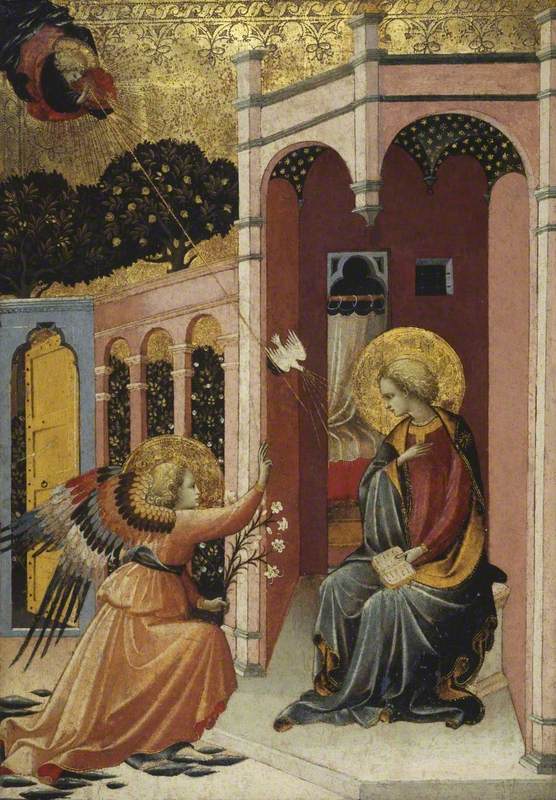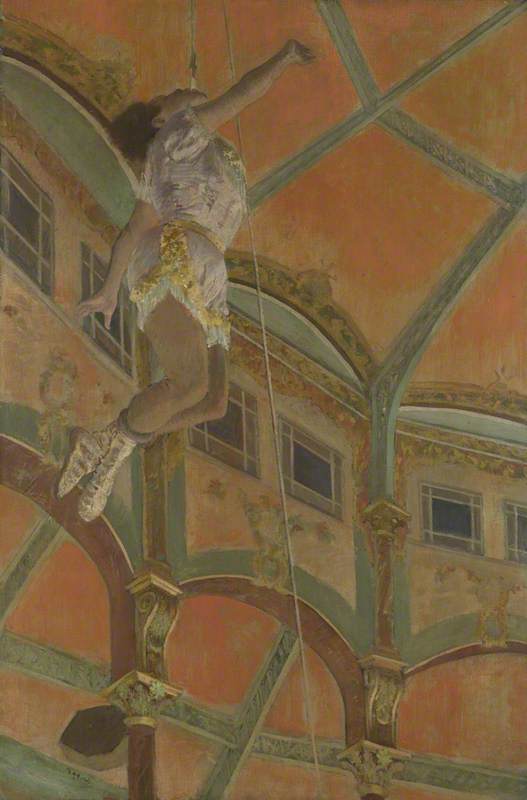The Burrell Collection in Pollok Country Park, Glasgow, houses the 9,000-object collection of Sir William and Constance Burrell. Originally opened in 1983 and reopened in March 2022 following a major refurbishment and radical redisplay, the museum won Art Fund Museum of the Year 2023. The collection has some of the world’s finest medieval stained glass and tapestries as well as paintings by Old Masters and Glasgow Boys and Chinese and Islamic art.
Art Unlocked is an online talk series by Art UK in collaboration with Bloomberg Philanthropies. This Curation is based on a talk by Dr Samuel Gallacher, Keeper of The Burrell Collection on the 1st November 2023. You can watch a recording of the talk on Art UK's YouTube channel.
-
This ancient stylistic bronze vessel with a swing handle, called a you, was one of a set of vessels used for serving wine at a ceremonial banquet or as part of a sacrifice to the ancestors. The royal household, who gifted sets of ceremonial bronzes to their followers as a sign of political patronage, closely controlled the smelting and casting and determined who would own such symbols of power and status. When the owner died, bronzes such as this were placed in burials, within the foundations of ancient ancestral temples and various ritual deposits, as evidence of their wealth and status and as a means by which one could continue to offer sacrifice for the benefit of the family in the afterlife.

-
Carpet fragment with grotesque animal design, consisting of a chain of animals from the Indian jungle emerging from each other’s mouths, on a wine-red background. The animals include cheetahs, elephants, turtles, water buffalo, camels, birds and reptiles, and more. In addition, two supernatural creatures in the form of demonic masks appear amongst the animal compositions.

-
The Judgement of Paris c.1450–1455
The panel represents the Ancient Greek myth of the Judgement of Paris, according to which the Trojan prince Paris, brought up as a shepherd on Mount Ida, was assigned by Mercury the task of judging which of three disputing goddesses - Juno, Minerva and Venus - was the most beautiful. In response to Venus’s offer to him of the love of the most beautiful woman in the world, Helen of Sparta, Paris awarded her the prize of a golden apple. This fatal choice, involving the abduction of Helen from her husband, set in motion the ten year war of Troy.
Master of the Judgement of Paris (active mid-15th C)
Oil & tempera on panel
H 39.7 x W 49.8 cm
Glasgow Museums
-
This early seventeenth-century silver-gilt standing cup with ‘steeple’ top cover has a conical bowl with embossed and chased decoration of foliage, carnations, and tulips, and a blank cartouche probably for a heraldic coat of arms, on a matted ground. The vase-shaped stem has three handle-like scrolls, embellished with female monster heads, and is supported by a cylindrical waisted and stepped base with egg-and-dart borders. The domed cover is chased to match the bowl design and surmounted with a triangular finial with pierced opened work, supported by caryatid figures.

-
The Rehearsal c.1874
The Rehearsal is one of Degas’ first paintings of the ballet. It was a subject he continued to paint for the rest of his life. Although at first glance we feel that we have just happened upon this scene unfolding before our eyes, it is not at all realistic. Degas, unlike his Impressionist friends, rarely worked from life. Instead he worked from sketches, from memory and from his imagination. Despite this he has managed to capture a feeling of immediacy – the dancer almost hidden by the spiral staircase, the ankles descending the staircase and the woman on the right who is nearly cut in two.
Edgar Degas (1834–1917)
Oil on canvas
H 58.4 x W 83.8 cm
Glasgow Life Museums
-
These panels once formed part of much larger window commissioned for the Carmelite Church of Boppard-am-Rhein, Germany. 'Tree of Jesse' windows commonly represent the ancestry of Christ in the form of a family tree, with branches emanating from Jesse, reaching upwards and supporting an array of biblical prophets and kings, culminating in the figures of the Virgin Mary and Christ. In Germany during the 13th-15th centuries, this genealogy was sometimes replaced with important scenes from the Life of Christ and his mother, the Virgin Mary. Some panels from this arrangement are now lost, although others can be found in the Metropolitan Museum of Art, New York, the Detroit Institute of Arts, and Salve Regina University, Rhode Island.




